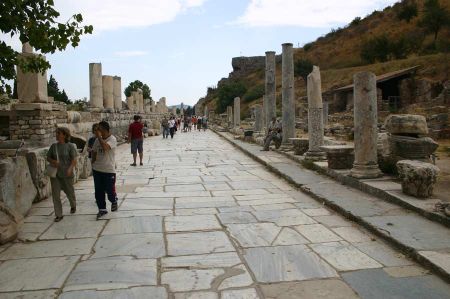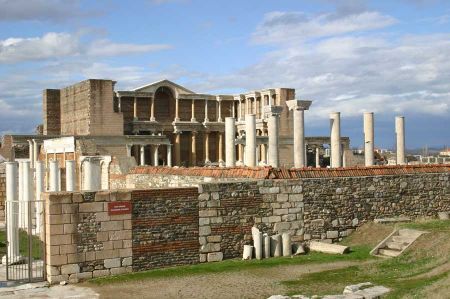Civitas - the Roman citizenship
- Written by Portal Editor
In the articles on Roman history of their development, the term Civitas is mentioned again and again, which in the literal translation from Latin means something like "citizenship".
Very early Roman settlements were well organized in their administration. Thus, in the urban centers, a medium-level administrative unit, semi-autonomous from Rome, was created, which was administered by representatives from the citizenry of the city and its surroundings. These administrative units, which were responsible for the urban center and the surrounding area, were usually given the name of the main town and the addition Civitas.
Civitas were mainly built in places that also had a large number of representative buildings such as forums, basilicas, theatres, temples, baths and aqueducts. Rest stops for merchants passing through, referred to as “mansiones” in ancient Rome, were also a typical sign of an existing civitas. In addition to the city council, which was called "curia", there were other officials, including a mayor, who was entitled "duum virn". The "duum virn" was also the regional contact for the Roman central administration.
There have typically been three major subgroups, often traceable to the particular initial phase in the relationship with Rome:
 - civitas stipendiaria (community subject to the tax)
- civitas stipendiaria (community subject to the tax)
- civitas foederata (allied municipality)'
- civitas libera (free community)
In the meaning, civitas can also mean "citizenship", the right that each individual resident was entitled to according to an ordinance, the civitas Romana, also known as Roman citizenship. Here the rights and obligations of the individual were written down, one could understand it as an ancient "basic law". This basic law was finally awarded to all free residents of the empire for life in 212 by Emperor Caracalla in the "Constitutio Antoniniana".
Well-known civitates in the province of Germania superior
Ladenburg (Latin Lopodunum) = Civitas Ulpia Sueborum Nicretum (after the Neckar Sueben);
Wimpfen = Civitas Alisinensium;
Cannstatt (?) = Civitas Aurelia G… (theory by C. Sebastian Sommer);
Rottenburg (Latin Sumelocenna) = Civitas Sumelocennensis;
Rottweil (Latin Arae Flaviae)
Baden-Baden (Latin Aquae) = Civitas Aquensis
Worms (Latin Borbetomagus) = Civitas Vangionum (after the Vangions);
Speyer (Latin Noviomagus) = Civitas Nemetum (after the Nemeters);
Wiesbaden (Latin Aquae Mattiacorum) = Civitas Mattiacorum (after the Mattia cores);
Frankfurt am Main – Heddernheim (Latin Nida) = Civitas Taunensium;
Dieburg (Latin Med… (rest of name unknown)) = Civitas Auderiensium
 Civitas also developed along the borders of the Roman Empire, mostly initially as military camps, an example being a Roman "Alen" where Roman cavalry units were stationed. Rottweil, the Roman "Arae flaviae", formed a civitas on the one hand and a "municipia" on the other, which could not always be clearly separated during the imperial period. If a new city was to be founded, this was particularly easy to do in the western part of the Roman Empire. In the east, on the other hand, existing structures of the "poleis" were usually used, which were usually organized similar to the civitas.
Civitas also developed along the borders of the Roman Empire, mostly initially as military camps, an example being a Roman "Alen" where Roman cavalry units were stationed. Rottweil, the Roman "Arae flaviae", formed a civitas on the one hand and a "municipia" on the other, which could not always be clearly separated during the imperial period. If a new city was to be founded, this was particularly easy to do in the western part of the Roman Empire. In the east, on the other hand, existing structures of the "poleis" were usually used, which were usually organized similar to the civitas.
When a representative administration building was found during excavations in Heidenheim an der Brenz at the end of the 1990s, the discussion began as to whether the Roman city, which was then called Civitas Aquileia, also had the rank of a civitas at all. Some facts indicate this, but it is not clear:
- The location as a crossing point of five Roman roads
- The size of 15 – 20 hectares of settlement area
- The garrison of about 1,000 horses
- The distance to other Civitas main towns
These points alone point to a Civitas, but there is no evidence. The same applies to Roman Pforzheim, which had preserved some of the important representative buildings since the third century. Again, there are no known Civitas in the vicinity, so that a Civitas would have made sense here. There is no evidence here either.
Please read as well:
